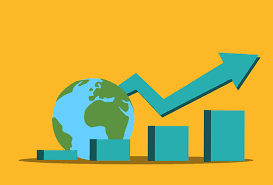“Sustainable development has become a pivotal objective for nations worldwide, particularly for developing countries striving to balance economic growth, social inclusion, and environmental preservation. This article explores the criteria for assessing sustainable development, the importance of development aid, methods of financing, and the economic challenges to be addressed.
Sustainable development is evaluated through interconnected criteria such as environmental impact, social inclusion, economic viability, and governance effectiveness. Development aid plays a critical role in supporting these goals by providing initial financing, expertise, and capacity building. Financing sustainable development involves public and private investments, partnerships, sustainable financial instruments, and international assistance.
The primary economic challenge lies in aligning immediate economic priorities with long-term environmental and social objectives. Overcoming this challenge requires strategic investments, policy realignment, and rigorous cost-benefit analysis.
EVALUATION CRITERIA FOR SUSTAINABLE DEVELOPMENT
Sustainable development is assessed based on several interconnected criteria:
Environmental Impact: Measurement of effects on natural resources, biodiversity, and climate.
Social Inclusion: Indicators of poverty reduction, access to education, and health care.
Economic Viability: Assessment of sustainable economic growth, job creation, and inequality reduction.
Governance and Institutions: Measurement of transparency, accountability, and effectiveness of public and private institutions.
IMPORTANCE OF DEVELOPMENT AID
Development aid plays a crucial role in supporting developing countries to achieve their sustainable development goals. It provides:
Initial Financing: For infrastructure, education, health, and other key sectors.
Expertise and Technology: Knowledge and technology transfer to support economic and environmental development.
Capacity Building: Training and institutional development for effective resource management.
HOW TO FINANCE SUSTAINABLE DEVELOPMENT
Financing for sustainable development can be achieved through several means:
Public and Private Investments: Encouraging investments in sustainable infrastructure and green industries.
Public-Private Partnerships: Collaboration to finance and manage long-term infrastructure projects.
Sustainable Financial Markets: Issuance of green bonds and financial products focused on sustainable development.
International Aid: Grants, concessional loans, and technical assistance from international organizations and donor countries.
PRIMARY ECONOMIC EFFICIENCY CHALLENGE FOR SUSTAINABLE DEVELOPMENT
The primary challenge lies in aligning economic priorities with long-term environmental and social goals. This includes:
High Initial Costs: Investments needed for transitioning to sustainable practices.
Resistance to Change: Repurposing existing economic policies and practices.
Cost-Benefit Analysis: Precise measurement of long-term benefits versus initial costs.
In conclusion, sustainable development relies on holistic evaluation, effective aid, and adequate financing to overcome economic challenges. For developing countries, adopting integrated strategies and international commitment are essential to ensure a sustainable future for future generations.
